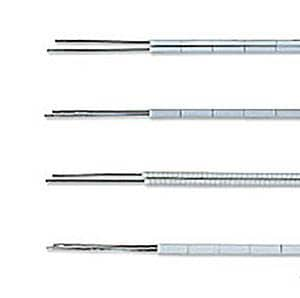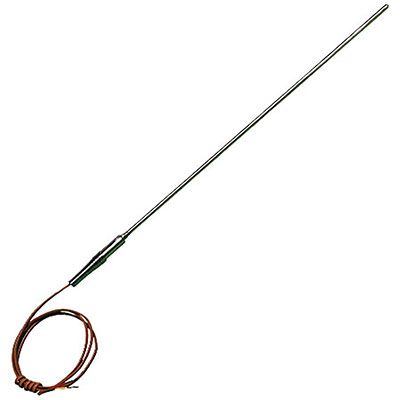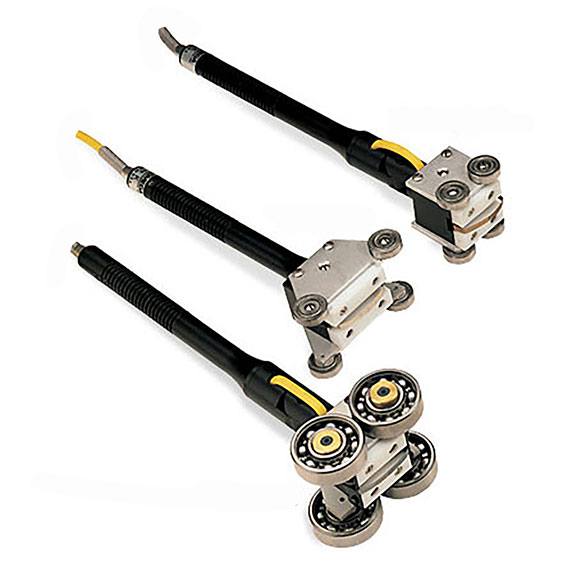Because a thermocouple can take many shapes and forms, it is important to understand how to correctly select the right sensor. The most commonly criteria used to make that choice are the temperature range, the chemical resistance, the abrasion and vibration resistance and the installation requirements. Installation requirements would dictacte your choice of one of the styles below
Beaded Wire Thermocouple

A beaded wire thermocouple is the simplest form of thermocouple. It consists of two pieces of thermocouple wire joined together with a welded bead. Because the bead of the thermocouple is exposed, there are several application limitations. The beaded wire thermocouple should not be used with liquids that could corrode or oxidize the thermocouple alloy. Metal surfaces can also be problematic. Often metal surfaces, especially pipes are used to ground electrical systems The indirect connection to an electrical system could impact the thermocouple measurement. In general, beaded wire thermocouples are a good choice for the measurement of gas temperature. Since they can be made very small, they also provide very fast response time
Thermocouple Probe

A thermocouple probe consists of thermocouple wire housed inside a metallic tube. The wall of the tube is referred to as the sheath of the probe. Common sheath materials include stainless steel and Inconel®. Inconel supports higher temperature ranges than stainless steel, however, stainless steel is often preferred because of its broad chemical compatibility. For very high temperatures, other exotic sheath materials are also available. View our line of high temperature exotic thermocouple probes.
The tip of the thermocouple probe is available in three different styles. Grounded, ungrounded and exposed. With a grounded tip the thermocouple is in contact with the sheath wall. A grounded junction provides a fast response time but it is most susceptible to electrical ground loops. In ungrounded junctions, the thermocouple is separated from the sheath wall by a layer of insulation. The tip of the thermocouple protrudes outside the sheath wall with an exposed junction. Exposed junction thermocouples are best suited for air measurement. Certain thermocouple probes allow you to connect directly to a PC via USB connectivity
Surface Probe

Measuring the temperature of a solid surface is difficult for most types of temperature sensors. In order to assure an accurate measurement, the entire measurement area of the sensor must be in contact with the surface. This is difficult when working with a rigid sensor and a rigid surface. Since thermocouples are made of pliable metals, the junction can be formed flat and thin to provide maximum contact with a rigid solid surface. These thermocouples are an excellent choice for surface measurement. The thermocouple can even be built in a mechanism which rotates, making it suitable for measuring the temperature of a moving surface. Type K is ChrOMEGA™/AlOMEGA™.


